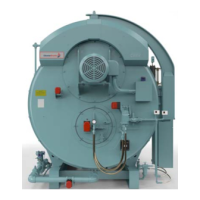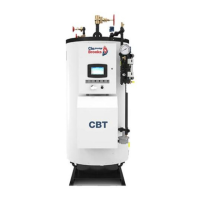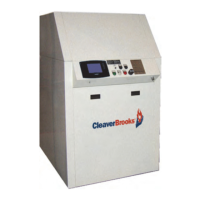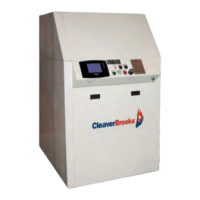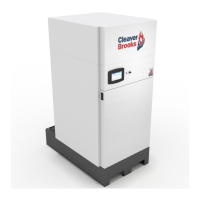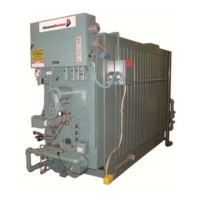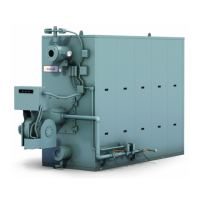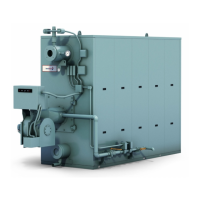Waterside Care
3-14
750-368
CBEX Elite 100-1200 HP
down. Dormant periods, and even frequent shutdowns, expose the fireside surfaces to condensation below the
dew point during its off cycle. Moisture and any sulphur residue can form an acid solution. Under certain condi-
tions, and especially in areas with high humidity, the corrosive effect of the acid will be serious enough to eat
through or severely damage boiler tubes or other metal heating surfaces during the time that a boiler is out of
service.
The condition does not generally occur during normal firing operation, because the high temperature of operation
vaporizes any condensation. However, proper boiler operation must be maintained, especially with a hot water
boiler, to prevent the flue gases from falling below the dew point.
At the start of layup, thoroughly clean the fireside by removing any soot or other products of combustion from the
tubes, tube sheets, and other fireside surfaces. Brushing will generally suffice. Sweep away or vacuum any accu-
mulation. The fireside surfaces may be flushed with water. However, all moisture must be eliminated after flush-
ing and the surface dried by blowing air or applying some form of heat. It is good practice to protect the cleaned
surfaces by coating them with an anti-corrosive material to prevent rust.
Swing open the boiler head at the stack end of the unit to prevent flow of warm, moist air through the boiler
tubes.
To prevent condensation from forming in the control cabinet, keep the control circuit energized. For extended
layup periods, especially where high humidity or large swings in ambient temperature occur, the control should
be removed and stored in a dry atmosphere.
Dry storage is generally employed when the boiler will be out of service for a significant period of time, or where
freezing temperatures may exist. In the dry storage method the boiler must be thoroughly dried because any
moisture would cause corrosion. Both fireside and waterside surfaces must be cleaned of all scale, deposits,
soot, etc. Steps must be taken to eliminate moisture by placing moisture-absorbing materials such as quick lime
(at 2 pounds for 3 cubic feet of volume) or silica gel (at 5 pounds for 30 cubic feet of volume) on trays inside the
vessel. Fireside surfaces may be coated with an anti-corrosive material, grease or tar paint. Refractories should
be brushed clean and wash-coated. All openings to the pressure vessel, such as manhole and handholes, should
be shut tightly. Feedwater and steam valves should be closed. Damper and vents should be closed to prevent air
form reaching fireside surfaces. Periodic inspection should be made and absorption materials renewed.
Wet storage is generally used for a boiler held in standby condition or in cases where dry storage is not practical.
The possibility of freezing temperatures must be considered. Care must again be taken to protect metal surfaces.
Variables preclude definite recommendations. However, it is suggested that the pressure vessel be drained, thor-
oughly cleaned internally, and re-filled to overflowing with treated water. If deaerated water is not available, the
unit should be fired to boil the water for a short period. Additional chemicals may be suggested by your local
Cleaver-Brooks authorized representative to minimize corrosion. Internal water pressure should be maintained at
greater than atmospheric pressure. Nitrogen is often used to pressurize the vessel.
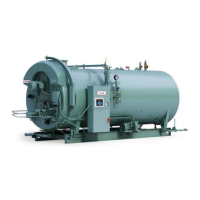
